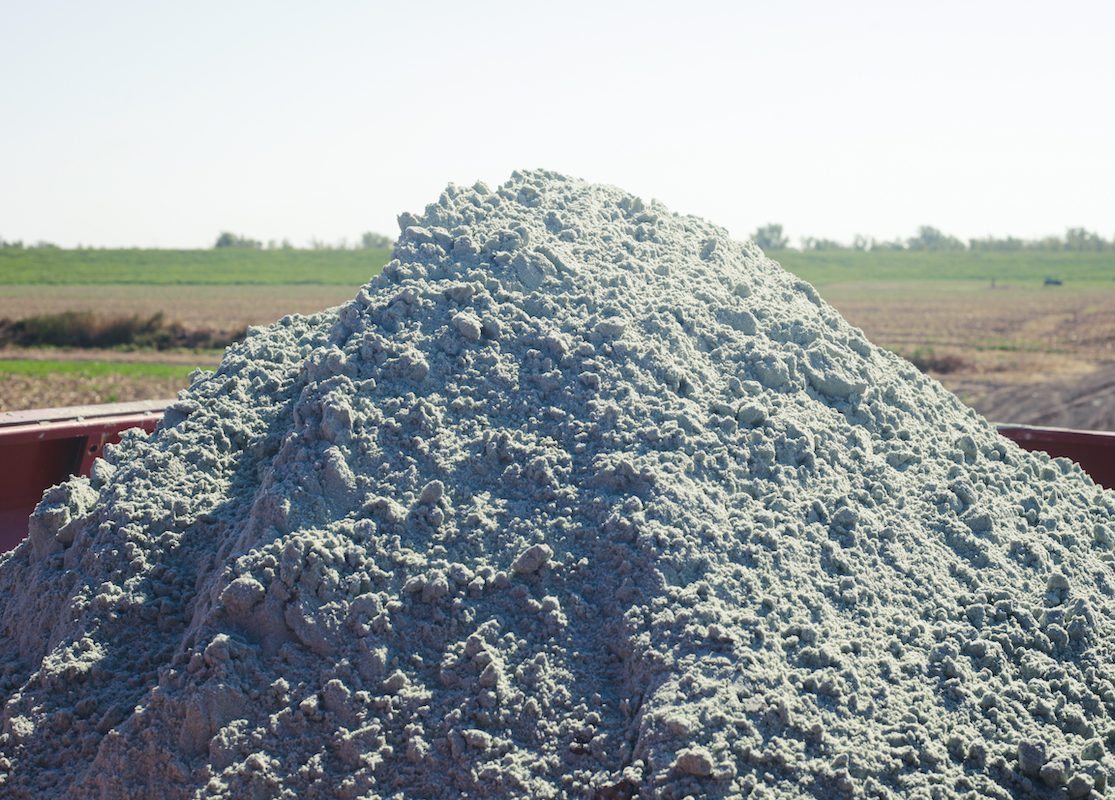[Disclosure: AgFunderNews’ parent company AgFunder is an investor in Eion]
- Eion—a startup with a patented approach to measuring carbon dioxide removed through enhanced rock weathering (ERW) on farmland—has signed a contract to deliver 8,000 tons of permanent CO2 removal to Microsoft and closed a $3 million series A extension.
- Eion will deploy olivine—a naturally occurring mineral it has optimized to weather quickly—on farmland across the Mid-Atlantic later this year. Every ton of carbon removed as part of the purchase will be verified through Eion’s patented direct measurement approach in accordance with third-party standards and verifiers, and will be delivered over the course of five years. The credits will start generating revenue for Eion in 2025.
- The series A extension funding comes from agricultural distributor Growmark (through which Eion can access millions of acres of farmland), AgFunder, Ridgeline, Trailhead Capital, Overture Partners, Mercator Partners, Exelon Foundation, and others, and will be used to deliver against new contracts and further invest in R&D.
“Eion’s verification methodology, continuous monitoring of environmental conditions, and established history of successfully delivering carbon removal makes them stand apart in ERW.” Brian Marrs, senior director, energy markets, Microsoft
Soil fingerprinting
Rather than applying ag lime (pulverized limestone or calcium carbonate) to farmland to reduce soil acidity, Berkeley-based Eion supplies farmers with a 1:1 replacement: crushed olivine, a mineral mined in Norway by its partner and investor Sibelco.
Rain and soil acidity dissolve the olivine, which increases soil pH, improves soil health, and absorbs CO2 from the atmosphere. Ultimately, it ends up in rivers and makes its way to the ocean, permanently sequestering carbon. Application levels will vary but are typically around one ton per acre, says Eion, which says it is on track to deliver 10 million tons of permanent carbon removal annually starting in 2030.
Founded by Dr. Elliot Chang and Adam Wolf in 2020, Eion calculates the carbon dioxide removed from the atmosphere through its mineral weathering process by measuring trace elements in the soil (‘soil fingerprinting’) such as magnesium and nickel.
Eion takes soil samples before the olivine is applied and monitors changes in the soil over time to quantify weathering and the CO2 removed in the process. Typically, 40-70% of the mineral dissolves six to nine months after application, going down to zero after one to four years, when it can be reapplied.
Eion generates revenue by selling carbon credits to companies looking to offset their emissions. “While it can depend on the buyer’s preferences,” says CEO Anastasia Pavlovic, “At present prices are generally in the $300-$400 [per ton CO2 removed] range.”
Enhanced rock weathering: ‘The permanence and scalability potential is very high but project ramp-up complexity is low’
While Eion’s business model relies on selling carbon credits, some of which have recently been deemed ‘worthless,’ the devil is in the detail, Pavlovic told AgFunderNews.
“What people like about enhanced rock weathering is that the permanence and scalability potential is very high but project ramp-up complexity is low – meaning that a large amount of carbon removal can happen even in the next few years, as opposed to [credits from] direct air capture [of carbon], which will take some years to ramp up given facility construction and production ramp-up time.
“I’ll also point out that we don’t view other pathways as competitors. While they also remove carbon dioxide permanently, all of these pathways (and more) scaling up as quickly as possible, will be needed to meet our climate goals as a planet.”
While the temptation for corporations buying carbon credits might be to pick the cheapest option, they are now facing far more scrutiny, which is prompting interest in credits from firms such as Eion that can provide far more robust documentation to support its ISO-compliant methodology, she claimed.
The fact that the Department of Energy is spending $35 million on carbon dioxide removal credits from firms using technologies such as ERW or direct carbon capture is also an indication of the rapid maturation of the market, says the company.
Farmers ‘extremely eager’ to work with rock weathering in regions where conventional ag lime prices are high
Asked about Eion’s progress, Pavlovic explained: “The projects slated for this fall will put us in the range of 10,000 new, incremental acres for 2024. Farmers are extremely eager to work with rock weathering, especially in regions where conventional ag lime prices are high.
“By participating in rock weathering, they receive a subsidized lower-cost product, which can greatly impact their annual crop budget. We’re also working on more commercial contracts, with both offsetters and insetters, which we are excited to share more about in the coming months.”
She added: “Farmers do receive money from the credits. No ERW project today is viable without some revenue coming in from a carbon asset. Farmers are excited about using Eion’s olivine because in addition to getting the pH benefits they need for productive crops, they’re receiving a subsidized product. Depending on the region, this can be a 50% savings or more in their total budget allocation for aglime. In regions where aglime is expensive, this savings could be $50/ton or more.”
Down the road, Eion is also looking at generating revenue from licensing its patented measurement technology to other players in the enhanced rock weathering space, said Pavlovic: “This is something that we are exploring, and think is a good option for Eion’s business going forward.”




